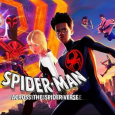
Spider-Man: Across the Spider-Verse
I first sat down to experience Spider-Man: Across the Spider-Verse with a blend of eagerness and trepidation that only a passionate admirer of the genre could understand. From the opening frames, I was transported into a kaleidoscopic world where familiar heroes emerged from diverse universes, each rendered with care, creativity, and raw innovation. As I watched the film, I felt as though I had been invited to explore not just a story, but a series of intertwined dimensions crafted to challenge my perception of what animated storytelling can be. This cinematic endeavor immediately stirred my curiosity and set the stage for a journey beyond the boundaries of conventional narrative forms.
A Journey Through Layers of Reality
The narrative of Spider-Man: Across the Spider-Verse is a masterful labyrinth of layers, each echoing a distinct voice and perspective that comes together to form a cohesive, immersive storyline. I found myself completely absorbed by the intricate plot that, while complex, never lost sight of emotional authenticity. The film introduces a multitude of characters whose lives intertwine in unexpected ways, prompting me to reassess the notion of identity in a world where every decision ripples across a spectrum of realities. I was particularly struck by how the filmmakers allowed the storyline to blossom, using each alternate universe as a canvas to explore different facets of hope, responsibility, and personal struggle.
Dynamic Animation and Visual Storytelling
The artistry of Spider-Man: Across the Spider-Verse is nothing short of revolutionary. Every scene burst with energy as the animation fluidly transitioned between various art styles, each reflective of the universe it represented. I was enchanted by the bold visual experiments that merged traditional comic aesthetics with contemporary animation techniques. The film’s visual narrative is as rich and layered as its script, with each frame offering meticulously crafted imagery that communicated as much as the dialogues. This dynamic interplay between moving landscapes and character expressions compelled me to see the film not merely as entertainment, but as a living piece of art that continually challenged the visual norms of animated cinema.
Immersive Audio Landscape
While the visuals played an enormous role in drawing me into the multiverse, the audio experience was equally potent in setting the tone. The soundtrack, vibrant and eclectic, threaded together a series of musical selections that spoke both to the era and the emotions of each character. I was captivated by the way the score shifted seamlessly between high-energy compositions during moments of excitement and softer, introspective melodies in quieter scenes. The voice acting further heightened these moments of emotional depth; every nuanced performance, especially by the main protagonist, resonated with authenticity and vigor. The soundscape elevated the film by complementing its visual dynamism, making every sequence feel meticulously orchestrated.
Engaging Color Palette and Artistic Flair
One of the aspects that held me spellbound was the film’s use of a vivid and engaging color palette. Each universe within the narrative seemed to possess its own set of hues, which served as a visual shorthand for the emotional and thematic tone of that reality. I marveled at how the bright, bold colors of one dimension could evoke a sense of wonder and optimism, while the darker, more subdued tones in another universe hinted at underlying struggles and complexities. The designers' masterful fusion of colors, which captured the characters' hidden inner worlds, stood as a clear affirmation of the film's exceptional artistic vision. This attention to detail made the entire viewing experience feel like a masterclass in visual storytelling and color theory applied to animated film.
Emotional Core and Character Exploration
Spider-Man: Across the Spider-Verse is more than an exhibition of technical brilliance; it is a deep dive into the heart and soul of its characters. I was particularly moved by the film’s exploration of identity and the burdens that come with being a symbol. The protagonist’s journey of self-discovery was rendered with such sensitivity that I found my emotions inextricably linked to his struggles and triumphs. Melodious moments of introspection were interwoven with bursts of action and levity, revealing a narrative that was both complex and refreshingly personal. As I watched, I felt an unexpected kinship with the characters, their challenges prompting me to reflect on the weight of choices, the nature of destiny, and the interconnectedness of our lives across different realms.
Narrative Complexity and Multi-Dimensional Themes
One of the most compelling aspects of the movie is its successful balancing act between narrative complexity and accessibility. I appreciated how the film tackled themes of identity, freedom, and the nature of responsibility across a spectrum of realities without succumbing to convoluted plotlines. Instead, the storyline unfolded organically, allowing each character’s narrative arc to shine in its own right. While I was occasionally challenged by the intricacy of the interwoven plots, this complexity only deepened my engagement with the film. Every twist and revelation was thoughtfully placed, encouraging viewers like me to actively interpret the unfolding events and make personal connections with the thematic undercurrents present in each scene.
Innovative Directing and Creative Vibes
From a directorial standpoint, the movie is a bold expedition into unconventional methods of storytelling. I was drawn to the way the directors managed to capture a sense of unbridled creativity while still maintaining narrative clarity. Their willingness to experiment with form and content was apparent in every frame, infusing the film with a sense of unpredictability. The creative choices extended beyond the visual and auditory realms, influencing the pacing, character development, and even the structure of the narrative. This daring approach left me feeling both exhilarated and inspired, as if the film were a manifesto for the future of animated storytelling — one that dares to push boundaries and redefine traditional cinematic conventions.
Technical Craftsmanship in Animation
The technical expertise on display in Spider-Man: Across the Spider-Verse is a celebration of modern animation technology melded with traditional handcrafted details. I observed that each scene was a precise blend of cutting-edge computer-generated imagery and artistic techniques that evoke the tactile feel of comic book drawings. The film’s animation style evolves throughout the narrative, reflecting shifts in tone and perspective as different universes collide. This meticulous craftsmanship allowed me to appreciate the subtle nuances of the motion and visual effects that might easily be overlooked in less attentive productions. Whether it was the fluidity of action sequences or the delicate rendering of emotional moments, every detail was accounted for, highlighting the collaborative brilliance behind its creation.
Bold Storytelling and Narrative Risks
What distinguishes this film in my eyes is its fearless approach to storytelling. Rather than resorting to formulaic sequences or predictable tropes, the creators embraced risk-taking, exploring unconventional narrative arcs and integrating moments of surprising introspection. I found that these bold narrative risks not only set the film apart from its predecessors but also enriched the overall experience. The willingness to question established norms within the superhero genre provided an intellectual stimulation that resonated deeply with me. As the story wove through unexpected twists and shifts in perspective, I was continually kept on my toes, appreciating the film’s capacity to challenge its audience intellectually and emotionally.
Interconnected Storylines and Cross-Dimensional Finesse
The nature of the film’s multiverse means that multiple storylines intersect in complex ways, creating a tapestry that is as rich as it is intricate. I was drawn to how each storyline, while distinct, contributed to a larger narrative fabric that underlined the universal themes of choice, destiny, and the consequences of action. The interplay between these diverse storylines offered a refreshing take on what it means to be a hero in a fragmented yet interconnected world. With every scene, I experienced a blend of suspense, wonder, and even introspection, as the characters navigated the delicate balance between personal aspirations and broader responsibilities. This cross-dimensional finesse was not merely a technical achievement but also a narrative triumph that kept my mind engaged long after the credits rolled.
Personal Impact and Viewer Connection
Throughout the film, I experienced a profound personal connection with the story and its characters. It is rare for a movie to evoke such a sense of introspection, yet Spider-Man: Across the Spider-Verse managed to tap into deeply personal themes of growth, resilience, and the continuous journey toward self-realization. I came away from each scene feeling as though my own experiences — the moments of uncertainty, of triumph, and of quiet reflection — were mirrored on screen. The film creates an environment where the viewer is invited to reflect on their own life, to think about the choices made and the paths taken. This intimate dialogue between the film and the audience is one of its most endearing qualities, reaffirming that even within a universe of fantastical elements, the human element remains at the core of every great story.
- Occasionally, the narrative complexity may challenge viewer comprehension;
- Some transitions between distinct art styles can appear abrupt;
- A few intriguing plot threads remain underexplored within the expansive multiverse;
- Dynamic animation and artistic style that elevates every scene;
- Complex narrative that skillfully interweaves diverse dimensions;
- Vibrant audio landscape paired with excellent voice acting;
- Bold and innovative directorial choices that break conventional molds;
- Emotional depth that fosters a personal connection with the characters;
- Outstanding technical craftsmanship that blends CGI with comic-inspired artistry;

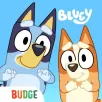
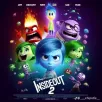


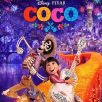




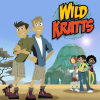

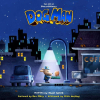
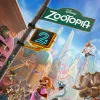

Leave a comment
Your comment is awaiting moderation. We save your draft here
0 Comments